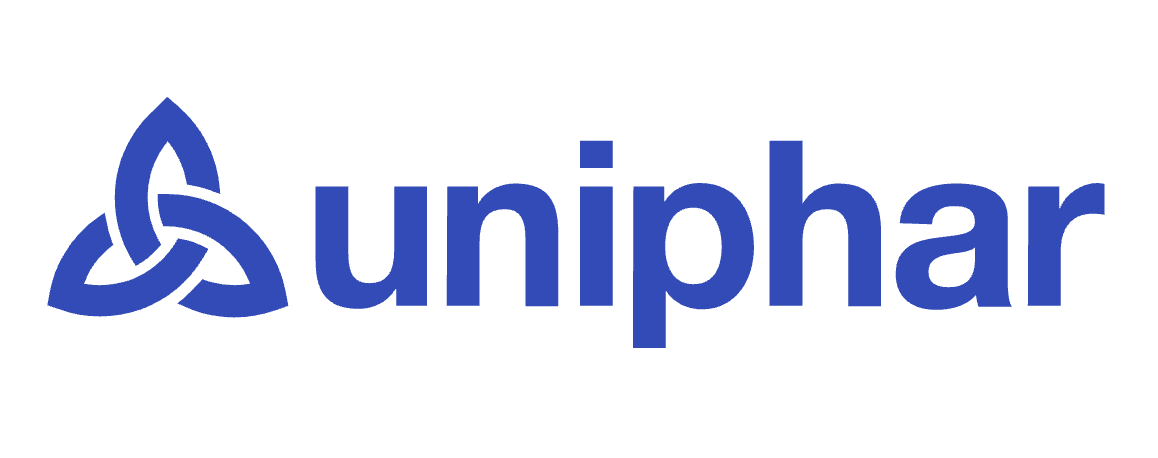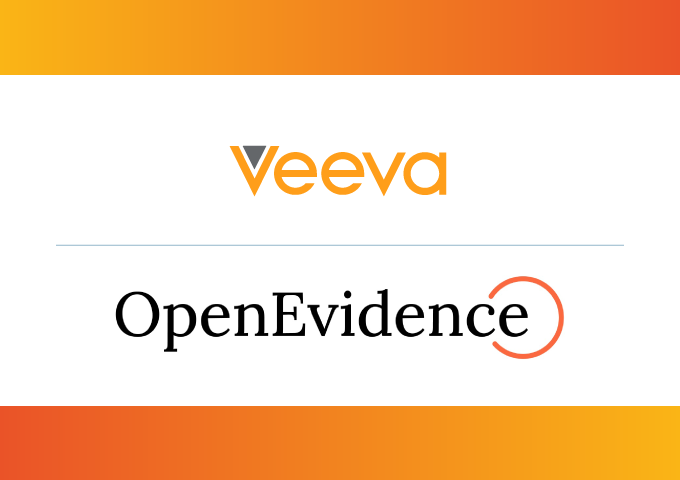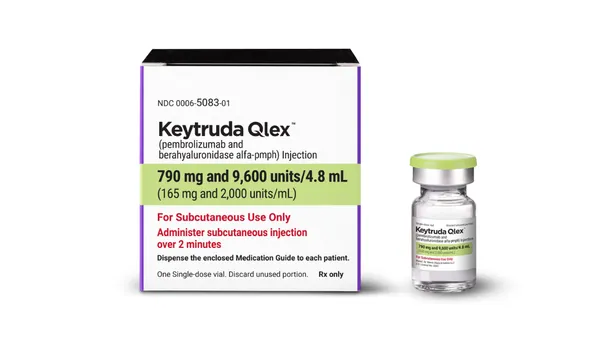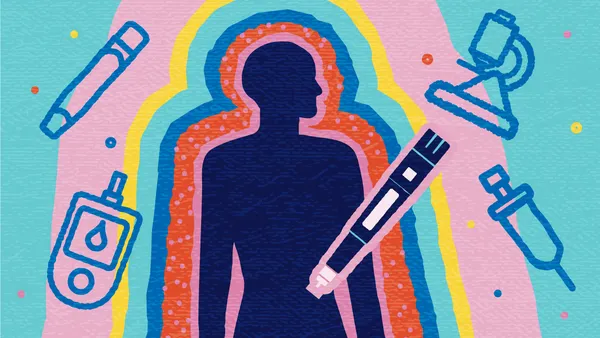Tremendous progress has been made in the treatment of diabetes over the last decade. Still, many people with diabetes have poor glycemic control, and there is a need for more convenient therapies. As the prevalence of diabetes, especially type 2 diabetes, continues to increase, products in development offer new options. Joe Young In some regards, diabetes patients in the United States are significantly better served than they were 10 years ago, Yet despite advances in drug therapy, the vast majority of patients remain in poor glycemic control. Deadly, disabling, and on the rise. That is how the Centers for Disease Control and Prevention (CDC) describes diabetes. In a revised March 2005 paper, the CDC says new evidence shows that one in three Americans who were born in 2000 will develop diabetes sometime during their lifetime. Many industry experts predict that the number of people with diabetes is expected to increase. From 1980 through 2002, the number of Americans with diabetes more than doubled from 5.8 million to 13.3 million. An additional 5.2 million people are believed to have diabetes but are unaware of it, say officials from the American Diabetes Association (ADA). (For more diabetes-related statistics, please see box on page 34) In some regards, patients in the United States are significantly better served than they were 10 years ago, says Joe Young, associate VP, diabetes brand leadership, at Novo Nordisk Inc. “Most notably, insulin analogs and advances in insulin-delivery systems provide patients with the ability to use insulin early in the treatment of diabetes,” Mr. Young says. But he notes that, despite the advances in drug therapy, the vast majority of patients remain in poor glycemic control. “In most European markets, insulin devices are used in 90% of patients,” he says. “The current U.S. usage rate is just more than 10%, and this has a big impact on patient care because insulin devices improve patient compliance and satisfaction with treatment.” Even with the advent of health-awareness campaigns that draw attention to the health problems associated with diabetes, the prevalence of diabetes is expected to be about 50 million people by 2012 in seven major markets, including the United States, Japan, Germany, France, the United Kingdom, Italy, and Spain, according to a recent report by Datamonitor. “The diabetes market is expected to grow simply because of the dramatic increase of type 2 diabetes, which is one of the few, if not the only, nonviral diseases that has been characterized as an epidemic,” says Nick Karachalias, Ph.D., senior endocrinology analyst at Datamonitor. This, he adds, is a direct result of poor diets and of the generally sedentary lifestyle in developed countries. Developing countries, on the other hand, are expected to contribute to the increase of the type 2 diabetic population as they become more westernized. “In addition, one needs to bear in mind that type 2 diabetes has a relatively low diagnosis rate,” he says. “If diagnosis improves in the future, the diabetes market could increase beyond our forecasts.” People with type 2 diabetes have added complications because of the need to treat comorbid conditions, Mr. Young says. “Many of the currently available diabetes medications are associated with weight gain, and we know that type 2 diabetes is often accompanied and exacerbated by excess weight or obesity,” Mr. Young says. “This creates the need for new effective therapies for the treatment of type 2 diabetes, particularly those that do not increase the risk of hypoglycemia and that can promote weight loss.” Officials from the National Institutes of Health say the prevalence of diabetes in the United States is likely to increase for several reasons. First, a large segment of the population is aging. Also, Hispanic Americans and other minority groups, who are at a particularly high risk for type 2 diabetes, make up the fastest-growing segment of the U.S. population. Finally, Americans are increasingly overweight and sedentary. According to recent estimates, the prevalence of diabetes in the United States is predicted to reach 8.9% of the population by 2025. “Health complications and comorbidities associated with diabetes are a huge drain on national health services around the world,” Dr. Karachalias notes. “Based on statistics from an ADA report, in 2002 the direct medical and indirect expenditures in the United States attributable to diabetes were estimated at $132 billion, or one out of every $10 spent on healthcare.” This is up from $98 billion in 1997. According to the ADA, direct medical expenditures in 2002 totaled $91.8 billion and comprised $23.2 billion for diabetes care, $24.6 billion for chronic diabetes-related complications, and $44.1 billion for excess prevalence of general medical conditions. Indirect costs resulting from lost workdays, restricted activity days, mortality, and permanent disability due to diabetes totaled $39.8 billion. Cardiovascular disease is the most costly complication of diabetes, accounting for more than $17.6 billion of the $91.8 billion in annual direct medical costs. The Diabetes Market The total diabetes market (oral and insulin) totaled about $11 billion in 2003 in major markets, according to analysts at Decision Resources. They expect the total diabetes market to reach $14 billion in three years. Decision Resources researchers expect the type 2 diabetes therapy market will enjoy sustained growth. In 2003, sales of pharmaceutical products for treating type 2 diabetes totaled more than $9.5 billion in the seven major pharmaceutical markets: United States, Japan, Germany, France, the United Kingdom, Italy, and Spain. Sales of type 2 diabetes therapies are expected to exceed $15.3 billion in 2013. According to Stephen DeSantis, market intelligence research analyst with Thomson CenterWatch, the market for type 2 diabetes therapies could reach more than $18 billion by 2012. Between 1997 and 2002, the age-adjusted percentage of adults with diabetes who reported taking only oral medications for diabetes increased to 49.7% from 42.1%, and the percentage of adults with diabetes who reported that their only diabetes medication was insulin decreased to 18.4% from 26.0%, according to the CDC. In 2002, the age-adjusted percentage of adults taking only oral medications (49.7%) was almost three times the percentage of adults taking only insulin (18.4%). In 2002, 84.1% of adults with diabetes reported taking medication (i.e., insulin or oral medications) for their diabetes. Many patients with type 2 diabetes also are prescribed insulin, although for this group insulin is usually given as part of a combination therapy, Mr. DeSantis says. “The oral antidiabetic drug (OAD) market has evolved during the past decade,” says Jean Siebenaler, M.D., clinical project group leader and medical director, late phase, at Kendle. “In addition to the first- and second-generation sulfonylureas, which were the mainstay of insulin secretagogues only 10 years ago, there are now meglitinides. There also are insulin sensitizers such as thiazolidinediones and biguanides, and postprandial glucose reducers, such as alpha glucosidase inhibitors.” Currently, diabetes treatments consist of major five classes of drugs: sulfonylureas, meglitinides, biguanides, thiazolidinediones, and alpha-glucosidase inhibitors. These five classes of drugs work in different ways to lower blood-glucose levels. Companies with a strong market position in the diabetes market include: Bristol-Myers Squibb, GlaxoSmithKline, Eli Lilly & Co./Takeda Pharmaceuticals, Novo Nordisk, Pfizer, and sanofi-aventis. The sulfonylurea class of drugs, which have been used since the 1950s, stimulate the beta cells of the pancreas to release more insulin. Pfizer’s Diabinese (chlorpropamide) is the only first-generation sulfonylurea still in use today. The second-generation sulfonylureas are used in doses smaller than the first-generation drugs. Second-generation drugs include: Pfizer’s Glucotrol and Glucotrol XL (glipizide) and Micronase and Glynase PresTab (glyburide); and sanofi-aventis’ DiaBeta (glyburide) and Amaryl (glimepiride). Meglitinides also stimulate the beta cells to release insulin. Two such products are Novo Nordisk’s Prandin (repaglinide) and Novartis’ Starlix (nateglinide). Prandin, an oral treatment for people who are newly diagnosed with diabetes, was approved in December 1997. Novo Nordisk has a number of diabetes treatment options on the market. In 2003, sales of Novo Nordisk’s diabetes-care products increased by 16%, and sales of its insulin analogs increased by 137%. Additionally, Novo Nordisk received an approvable letter from the FDA for Detemir, a long-acting basal insulin analog. The company hopes to make the product available to patients later this year. Bristol-Myers Squibb’s Glucophage (metformin), a biguanide, lowers blood-glucose levels primarily by decreasing the amount of glucose produced by the liver. Glucophage also helps to lower blood-glucose levels by making muscle tissue more sensitive to insulin so glucose can be absorbed. GlaxoSmithKline’s Avandia (rosiglitazone) and Eli Lilly/Takeda’s Actos (pioglitazone) are part of a group of drugs called thiazolidinediones. These drugs help insulin work better in the muscle and fat and also reduce glucose production in the liver. Avandia received approval from the FDA in April 2000 for use as a type 2 diabetes treatment as both monotherapy and in combination with metformin. Avandia had sales of $1.4 billion in 2003. According to Carole D. Gleeson, an analyst with Decision Resources, Actos had sales of $1.8 billion in 2003 in the seven major pharmaceutical markets. Bayer’s Precose (acarbose) and Pfizer’s Glyset (miglitol) are alpha-glucosidase inhibitors. These drugs help the body to lower blood-glucose levels by blocking the breakdown of starches and slowing the breakdown of some sugars. Bristol-Myers Squibb also markets Glucovance, a combination of glyburide and metformin, which is approved, along with diet and exercise, as initial drug therapy for people with type 2 diabetes. Among the oral agents, sanofi-aventis leads the field with its long-acting insulin Lantus, achieving about $500 million in sales in the seven major markets. Lantus (insulin glargine) is a once-daily, basal (long-acting) insulin for the treatment of type 1 and type 2 diabetes. “The position of these companies is safeguarded by their marketing of the relatively new compounds such as Actos and Avandia, which are unavailable in generic form, and that retail at a premium price, hence, converting a relatively low volume of sales to a strong revenue source,” Datamonitor’s Dr. Karachalias says. A newcomer to the diabetes market is Amylin Pharmaceuticals Inc. In March 2005, the company received FDA approval to market Symlin (pramlintide acetate) injection to be used in conjunction with insulin to treat diabetes. Symlin is a synthetic version of the human hormone amylin. It is the first member of a new class of therapeutic medications known as amylinomimetic agents, or amylin receptor agonists. Symlin is approved to be used at mealtime in patients with type 1 or type 2 diabetes who have failed to achieve desired glucose control despite optimal insulin therapy. “Symlin, a replacement for a hormone that was reported in 1987, is a completely novel compound,” says Eric Shearin, senior manager of corporate communications at Amylin Pharmaceuticals. “The company was founded on the discovery of that hormone.” The Future of the Diabetes Market Industry experts say the diabetes market could further expand from the introduction of novel drugs that can more effectively counter the mechanisms of the disease, alter the course of the disease, or offer multiple metabolic benefits. Datamonitor has identified several new classes of non-insulin compounds currently in development for diabetes. Of these classes, three present the most interest: glucagon-like peptide -1 (GLP-1) agonists; dipeptidyl peptidase IV (DPPIV) inhibitors; and dual peroxisome proliferator activator receptor (PPAR) agonists, Dr. Karachalias says. Decision Resources analysts expect sales in this segment (not including single-pill combination therapies) to increase nearly 6% annually to $4.1 billion in 2008 from $3.1 billion in 2003, as physicians prescribe these agents to manage their type 2 diabetes patients. Datamonitor researchers say one of the most exciting classes of agents in development is GLP-1 agonists. There have been suggestions that these agents will exhibit efficacy over an extended period of time and that they will offer some effect on beta-cell preservation. Two products in this category are exenatide and exenatide LAR (long-acting release). Amylin Pharmaceuticals and Lilly are collaborating on the development of these products. Exenatide is the first in a new class of drugs called incretin mimetics, which exhibits many of the same effects as the human incretin hormone GLP-1. Exenatide, like GLP-1, affects multiple organs that work together to improve blood-sugar levels. A new drug application for exenatide was submitted in June 2004. Amylin, Lilly, and Alkermes Inc. also are collaborating on the development of exenatide LAR, which is in Phase II development. Exenatide LAR is based on Alkermes’ proprietary Medisorb injectable sustained-release drug-delivery technology. “The main issue with exenatide is its mode of administration, namely it will have to be injected,” Dr. Karachalias says. “This may pose a problem with the uptake of exenatide and the subsequent patient compliance to therapy. But exenatide LAR promises to solve this problem with its long-acting release formulation, which means that patients will only have to inject themselves with the agent once a week or once a month.” GLP-1 analogs, such as exenatide, appear to lower glucose through several mechanisms of action: induction of insulin secretion in a glucose-dependent manner, delay of gastric emptying, and reduction of hepatic glucose output. “More importantly, GLP-1 analogs don’t seem to cause weight gain,” Ms. Gleeson says. “Preliminary in vitro studies suggest that it may increase pancreatic cell mass (rejuvenate damaged pancreatic beta cells). But exenatide must be injected multiple times daily. This is a very big barrier to uptake.” Datamonitor forecasts that sales of exenatide will remain relatively low at $81 million by 2012, while exenatide LAR will reach $1.56 billion in the same time period. Another promising drug in the pipeline is LAF237, which is being developed by Novartis and is currently in Phase III trials. LAF237 belongs to the class of DPPIV inhibitors, which uses the same basic biochemical pathway as GLP-1 agonists. LAF237 is the first in a new class of drugs to improve glycemic control in patients with type 2 diabetes. Unlike GLP-1, LAF237 can be orally administered, Dr. Karachalias says. “Because of LAF237’s mode of administration as an oral tablet, we expect better patient compliance leading to increased uptake,” he says. “It is predicted that LAF237 will be launched by 2007 and is likely to have blockbuster potential by 2012.” Another new class of drugs, known as dual PPAR agonists, simultaneously activates both peroxisome proliferator activated receptors (PPARs) known as PPAR alpha and PPAR gamma. Several companies are developing agents in this area. PPAR-gamma agonists are thought to reduce insulin resistance by enhancing its effects at peripheral target sites. Mr. Karachalias says dual PPAR agonists were once hailed as the next big development in the treatment of diabetes. But the recent withdrawal of many leading agents following safety concerns has prompted the FDA to request additional safety data before considering the approval of any such compounds. “This development will severely delay the progress of dual PPAR analogs,” Mr. Karachalias says. Bristol-Myers Squibb and its partner, Merck, submit ed a NDA in December 2004 for muraglitazar, a dual PPAR, for the treatment of type 2 diabetes. AstraZeneca is developing galida, which is currently in Phase III trials for type 2 diabetes mellitus. A PPAR alpha-gamma agonist, the product has demonstrated metabolic effects, including improvement in both glycemic control as well as dyslipidemia. AstraZeneca plans to file galida for approval in 2007. Hopes for an earlier filing were set back by the FDA’s request for further safety studies. “Dual PPAR, PPAR-alpha, and PPAR-gamma agonists are thought to affect reductions in lipid and glucose levels,” Ms. Gleeson says. “But side effects have been major issues in drug development. Over the past few years, many have been dropped in Phase III because of tumor growth in animal models or uncontrollable fluid retention in patients.” Many diabetic patients must inject themselves with insulin multiple times a day, either manually or via a medical device. Therefore, new formulations offering convenient insulin delivery methods, such as oral sprays and inhalable versions, have the potential for high pricing because of patient demand, Mr. DeSantis says. “For patients dependent on insulin, we must find a method of delivery other than self-administered injections to improve compliance,” Dr. Siebenaler says. “Oral, inhaled, and transdermal delivery systems might be better accepted by patients.” “The major area of company activity in this class is the quest to develop a new drug-delivery system to improve on the inconvenience of daily injections,” Mr. DeSantis says. He says this area of unmet need has seen new players enter this area of the market, including Pfizer, Nektar, Generex, and Emisphere Technologies. Nektar, in collaboration with Pfizer and sanofi-aventis, has developed an inhaled insulin product called Exubera, which is presently under European review and in Phase III trials in the United States. Exubera uses a pulmonary delivery system that permits noninvasive delivery of insulin to the alveoli. Analysts from Decisions Resources say Exubera has faced some difficulty in Europe, where the EMEA has requested further safety data. “While the long-term consequences of uncontrolled hyperglycemia are well-documented and the health preserving benefits of proper glucose control are well known, many patients resist the pain and inconvenience of daily insulin injections,” says Joseph Feczko, executive VP at Pfizer Global Research and Development. “Exubera offers a needle-free alternative that is preferable to many people. And many more people are expected to get the benefits of insulin therapy.” But, according to Ms. Gleeson, dosing accuracy is a major concern for physicians. “Moreover, physicians are concerned about the potential long-term safety of the pulmonary delivery of insulin,” she says. “Oral insulin is not likely to enter the market in the near future so its impact is still not yet well defined.” Dr. Karachalias says some of these agents have the potential to become future blockbusters, but their success will ultimately depend on factors such as their safety and efficacy, which needs to be proven through extensive clinical trials and factors such as the degree of convenience that they will offer prospective patients. According to Decision Resources, novel agents are expected to substantially expand the type 2 diabetes market. Inhaled insulin agents and GLP-1 analogs will command premium prices because they offer greater convenience and/or a novel mechanism of action. Analysts expect that these types of novel agents will command almost 40% of the market in 2013. Another driver of growth in the diabetes market will be single-pill combination products. These agents improve patient compliance and, according to physician experts, are becoming the standard approach for treating type 2 diabetes. The increasing prevalence of type 2 diabetes and the growing popularity of polypharmacy also will contribute to the use of these agents. Decision Resources analysts predict vigorous growth in class sales at an annual rate of 17% per year to more than $3.2 billion in 2013 from $670 million in 2003. “In the last few years, we’ve seen the development of more combination treatments, manufactured into a single pill,” Mr. DeSantis says. “Both GlaxoSmithKline’s Avandamet and Bristol-Myers Squibb’s Glucovance are successful examples of these types of treatments. Combining metformin with either rosiglitazone or glipzide can improve patient compliance and reduce the possibility of low blood sugar complications.” PharmaVOICE welcomes comments about this article. E-mail us at [email protected]. Success in the Diabetes Market There are four main issues that pharmaceutical companies should consider when trying to bring to the market a new diabetes agent: 1. Efficacy: Any new agent should have an established efficacy profile compared with the already existing agents. This is particularly difficult for drugs targeting type 1 diabetics, since insulin has almost unlimited glucose-lowering potential and has been available for an extremely long time, and physicians are very familiar with it. 2. Safety: Robust safety data, obtained through lengthy and well-designed clinical trials, are of the utmost importance. This is even more crucial for the diabetes market because most diabetics who have had the disease for a length of time will be likely to have somewhat compromised cardiac function. As a result, any new potential antidiabetic agent should be safe, not only when administered on its own, but also in combination with other agents. 3. Convenience/compliance: A lack of side effects (even if they are simply annoying rather than life-threatening) and a convenient mode of administration may favorably impact compliance, thus maximizing the market potential of any agent. 4.Positioning: The two most popular antidiabetic agents (metformin and sulfonylureas) are now available in generic forms. This creates a cheap and effective first-line, and possibly second-line, of therapy that is very difficult to be penetrated by new agents. As a result, the positioning of any new agent will be crucial for future success. Diabetes Facts Diabetes mellitus is a group of diseases characterized by high levels of blood glucose resulting from defects in insulin production, insulin action, or both. Insulin is the veteran treatment for diabetes. Type 1 diabetes was previously called insulin-dependent diabetes mellitus (IDDM) or juvenile-onset diabetes. Type 1 diabetes develops when the body’s immune system destroys pancreatic beta cells, the only cells in the body that make the hormone insulin that regulates blood glucose. Type 1 diabetes accounts for about 5% to 10% of all diagnosed cases of diabetes. Type 2 diabetes was previously called non-insulin-dependent diabetes mellitus (NIDDM) or adult-onset diabetes. Type 2 diabetes accounts for about 90% to 95% of all diagnosed cases of the disease. It usually begins as insulin resistance, a disorder in which the cells do not use insulin properly. There are 18.2 million people in the United States, or 6.3% of the population, who have diabetes. Nearly one-third, or 5.2 million people, are unaware that they have the disease. About one in every 400 to 500 children and adolescents has type 1 diabetes. Of those 20 years old or older, 18 million people had diabetes in 2002; 8.7% of all people in this age group have diabetes. Of those 60 years old or older, 8.6 million people have diabetes; 18.3% of all people in this age group have diabetes. 1.3 million people 20 years old or older are diagnosed with diabetes each year. Diabetes was the sixth leading cause of death listed on U.S. death certificates in 2000 — 69,301; in total, diabetes contributed to 213,062 deaths. Overall, the risk for death among people with diabetes is about two-times that of people without diabetes. Diabetes is the leading cause of new cases of blindness among adults 20 to 74 years of age. Diabetes is the leading cause of treated end-stage renal disease, accounting for 43% of new cases. About 60% to 70% of people with diabetes have mild to severe forms of nervous system damage. The total (direct and indirect) cost of diabetes in the United States in 2002 was $132 billion; direct medical costs were $92 billion; and indirect costs were $40 billion (disability, work loss, premature mortality). Stephen DeSantis The number of type 2 diabetes patients worldwide is expected to grow significantly because of the rising incidence of obesity and the simple fact that people are living longer in developing countries. Dr. Jean Siebenaler For patients dependent on insulin, we must find a method of delivery other than self-administered injections to improve compliance. Oral, inhaled, and transdermal delivery systems might be better accepted by patients. Dr. Nick Karachalias There is a recent turn toward studies that will evaluate the potential of certain compounds in preventing diabetes. But it is harder to market an agent for preventing a disease, because manufacturers would have to target and treat an asymptomatic population. Joseph Feczko More than half of the people with diabetes remain uncontrolled or poorly controlled. Diabetes and its complications account for more than $100 billion in healthcare costs annually in the United States. Experts on this topic Stephen DeSantis. Market Intelligence Research Analyst, Thomson CenterWatch, Boston; Thomson CenterWatch is a publishing and information services company and a business of Thomson Corp. For more information, visit centerwatch.com. Joseph Feczko. Executive VP, Pfizer Global Research and Development, New London, Conn.; Pfizer discovers, develops, manufactures, and markets leading prescription medicine for humans and animals and many consumer brands. For more information, visit pfizer.com. Carole D. Gleeson. Analyst, Decision Resources Inc., Waltham, Mass.; Decision Resources provides in-depth research on the trends, emerging developments, and market potential of the drug industry. For more information, visit decisionresources.com. Nick Karachalias, Ph.D. Senior Endocrinology Analyst, Datamonitor Plc., New York; Datamonitor, with global headquarters in London, is a business information company. For more information, visit datamonitor.com. Eric Shearin. Senior Manager, Corporate Communications, Amylin Pharmaceuticals Inc., San Diego; Amylin Pharmaceuticals is a biopharmaceutical company dedicated to developing innovative medicines to improve the lives of people with metabolic diseases. For more information, visit amylin.com. Jean Siebenaler, M.D. Clinical Project Group Leader and Medical Director, Late Phase, Kendle, Cincinnati; Kendle is a global CRO delivering clinical-development solutions to help the world’s biopharmaceutical companies maximize product life cycles and grow market share. For more information, visit kendle.com. Joe Young. Associate VP, Diabetes Brand Leadership, Novo Nordisk Inc., Princeton, N.J.; Novo Nordisk is a leader in diabetes care and other pharmaceutical products. For more information, visit novonordisk-us.com.
An article from












